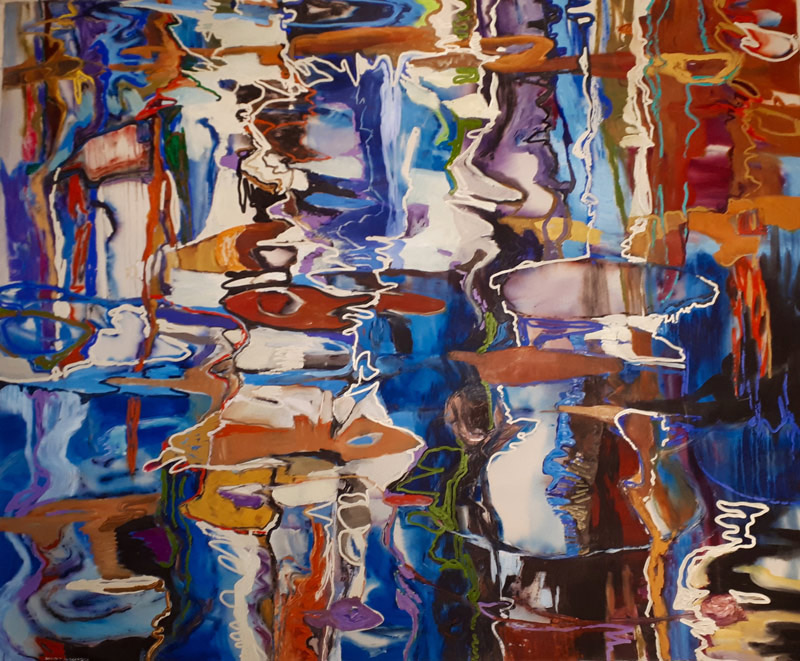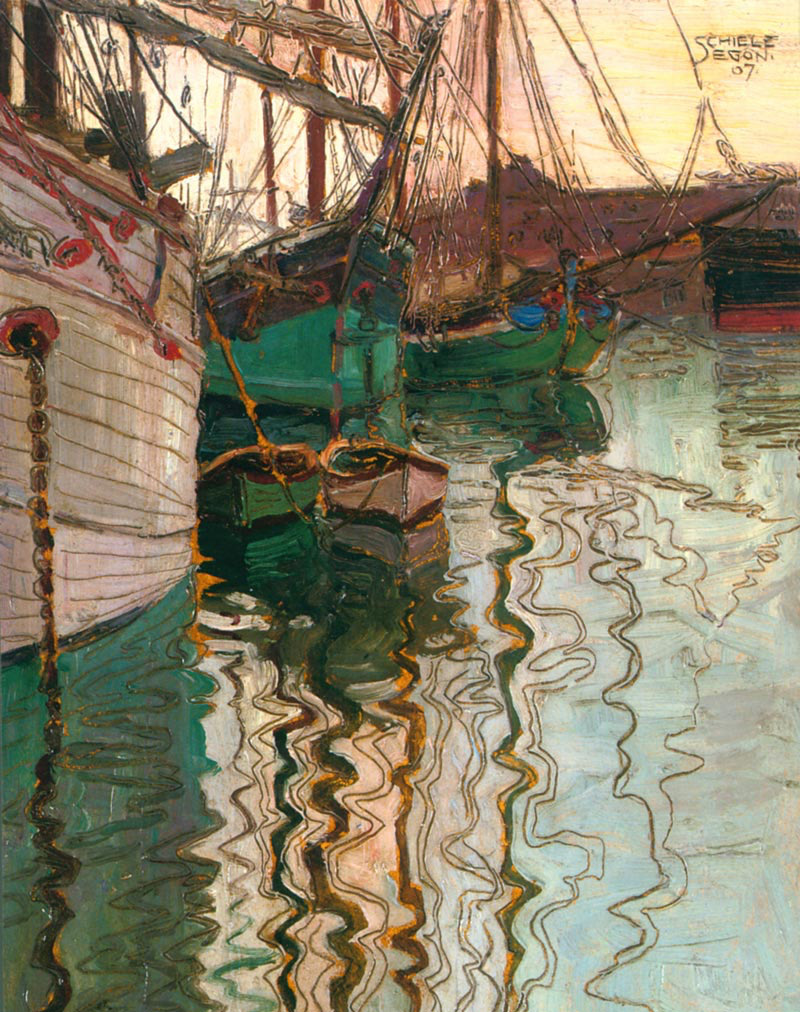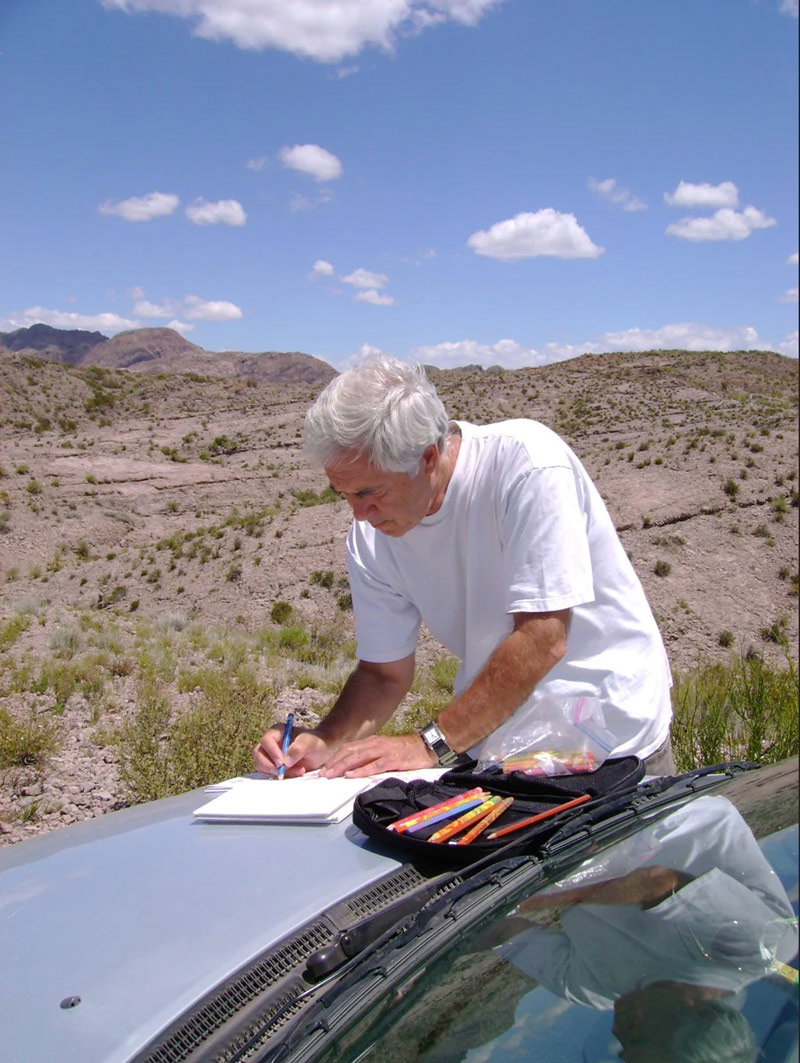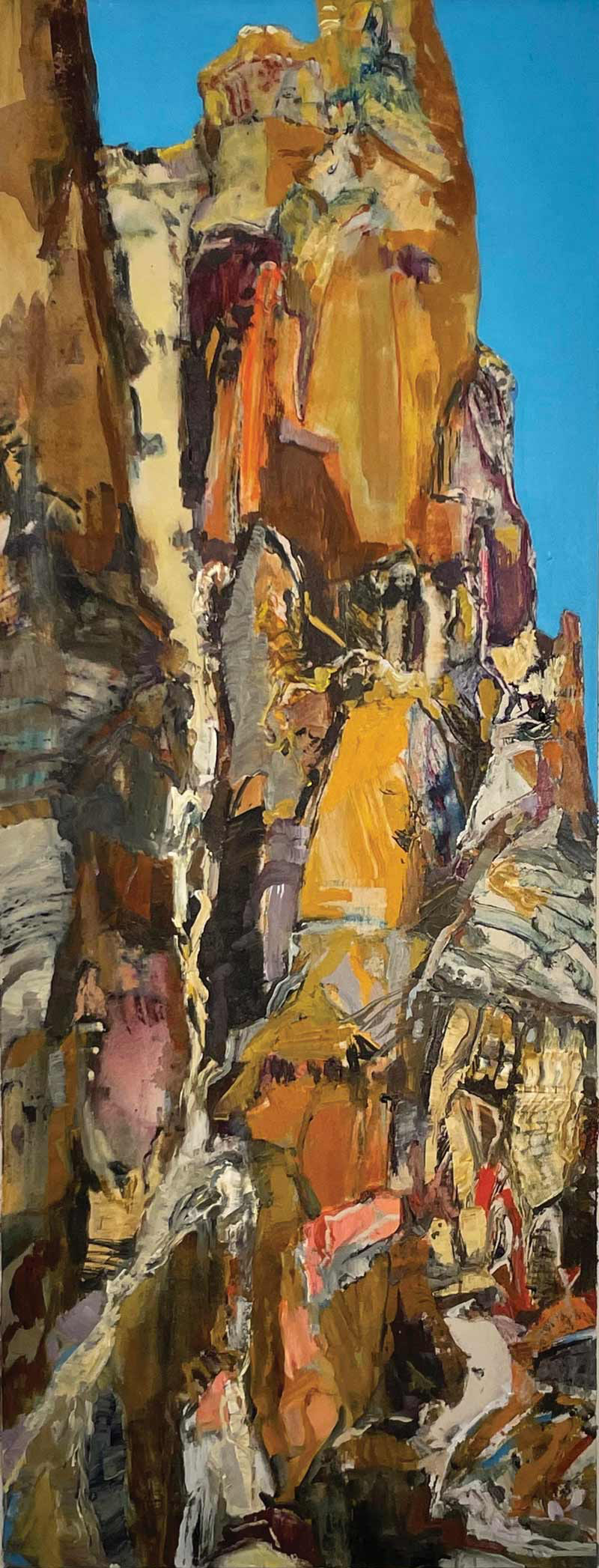Looking & Seeing
one long look at one work of art
John O'Hern is an arts writer, curator and retired museum director who is providing a weekly contemplation of a single work of art from our gallery. In our fast-paced lives overflowing with information, we find it necessary and satisfying to slow down and take time to look. We hope you enjoy this perspective from John.

John O'Hern has been a writer for the 5 magazines of International Artist Publishing for nearly 20 years. He retired from a 35-year-long career in museum management and curation which began at the Albright-Knox Art Gallery where he was in charge of publications and public relations and concluded at the Arnot Art Museum where he was executive director and curator. At the Arnot Art Museum he curated the groundbreaking biennial exhibitions Re-presenting Representation. John was chair of the Visual Artists Panel of the New York State Council on the Arts and has written essays for international galleries and museums.
November 10, 2024
DAVID T. ALEXANDER | My Head Remains in the Clouds as the Morning Starts

Reflecting on looking at and seeing David Alexander’s paintings, the conjunction of abstraction and representation arises. From time to time, people look at his paintings of reflections on water, declare them abstract and walk away.
On one occasion, he recounts, “I did one exhibition where I had about eight or nine large water paintings. People would walk in and say, ‘Oh, that's so abstract!’ I wanted to argue, but they're there for three minutes, what are we going to talk about that would make any sense? So the next day I took one painting down and I took another out of storage that had just a tiny strip of land across the top and I put it right in the middle so that when everybody walked in they got it right away.”
My first question to him was, “Let’s dive right in. Where did the reflections come from?”
Dave’s father was a tugboat operator on the coast of British Columbia for 51 years. “When I was a teenager,” he says, “I worked with him in the summer as a deckhand. Tugboats go slow, dragging lots of logs and barges. I had a lot of idle time between destinations and I was always drawing and painting. Looking at the water is mesmerizing. It's like sitting on the beach. First you watch the sunset and then you see things in the water. In summertime you see that phosphorescence on the waves. It fascinated me.
“We lived in Steveston, part of Richmond, BC, a Japanese fishing village. We moved from Vancouver to there and there was water everywhere around us. So it was a natural thing to just look at it. I had been making art before that and I started drawing tugboats. But then I started looking at the water. I would look at Egon Schiele’s paintings and say, ‘Whoa, look at the reflection that guy did.’”
Dave’s painting, My Head Remains in the Clouds as the Morning Starts, a 78" x 96”, acrylic on canvas, suggests the scene it depicts receding into the distance rather than being a static abstract painting. Its unexpected vitality brings to mind several observations by Schiele, who’s paintings of reflections on water had inspired to Dave to begin painting them.
 Schiele wrote, “At present, I am mainly observing the physical motion of mountains, water, trees and flowers. One is everywhere reminded of similar movements in the human body, of similar impulses of joy and suffering in plants...” And on the body, he wrote, “Bodies have their own light which they consume to live: they burn, they are not lit from the outside.”
Schiele wrote, “At present, I am mainly observing the physical motion of mountains, water, trees and flowers. One is everywhere reminded of similar movements in the human body, of similar impulses of joy and suffering in plants...” And on the body, he wrote, “Bodies have their own light which they consume to live: they burn, they are not lit from the outside.”
The “physical motion of mountains, water” and the fire of his passion inspires Dave’s own physical motion in applying paint. The abstract expressionists, whose work he first saw in New York, brought attention to the surface of their canvases with their gestural application of viscous paint. He showed me several of his well-used brushes—one of which was an eight-inch wallpaper paste brush cut in half. He commented, “I remember doing drawings of just water. But I was frustrated. I just didn't know what the line was about and then it became about the paint. Drawing came back into it and then mark making with those brushes became synonymous with what needs to be done with the paint. It was a natural thing for me to do.
“I'll use my fingers, scrapers, brushes, it doesn't matter. A tennis ball works sometimes. Just roll it across and you got a line you can't paint.”
 The vital, vibrant application of paint we see in his “wet” series also enlivens his paintings of the desert, his “dry” series.
The vital, vibrant application of paint we see in his “wet” series also enlivens his paintings of the desert, his “dry” series.
The vastness of the New Mexico landscape inspires him as much as a seascape. He says, “I instantly fell in love with the desert. I don’t know why, but I feel extremely comfortable there – well, not comfortable because it’s not a comfortable place in the desert physically – but visually I find it astounding.”
He sketches in the desert, capturing “what the land feels like.” Back in the studio, he begins painting and, eventually, lets the painting take over. He says, “It gives me great pleasure to see where I was and if I’ve captured that feeling of the place I was in.”
In a statement for his 2015 exhibition, Land We Have Not Synthesized, he wrote, “For those who love to paint, who can’t and won’t quit, painting continues to evolve in curious ways. A good painting takes time to be understood--it avoids being appreciated only in an instant or contained on-screen as a sum of bytes. This refusal by the painting allows the viewer to consider it over time, coming to understand more in every view.”
 Acutely aware of the “impermanence, transience and vulnerability of land” he titled one of his paintings in his current Evoke exhibition, Almost a Stack, Erosion Wins Again. The vertical stone spire is cropped at the top and silhouetted against a small patch of blue sky.
Acutely aware of the “impermanence, transience and vulnerability of land” he titled one of his paintings in his current Evoke exhibition, Almost a Stack, Erosion Wins Again. The vertical stone spire is cropped at the top and silhouetted against a small patch of blue sky.
“In every painting here the blue is for hope,” he says. “Every blue is different. I've seen all those blues everywhere.
“The form is cut off. There’s no top to it. That bugs some people. But it's psychological. Your brain finishes it.”
The complex, abstract surfaces of his paintings and their often only slight suggestions of representation were described nicely by a writer in the Canadian newspaper, “The Globe and Mail”. Gary Michael Dault wrote that Dave is an artist who could “simultaneously make convincing the reality of the scene before him…and make manifest, at the same time, the highly abstract dazzle of the visual information that makes up what we see”.

